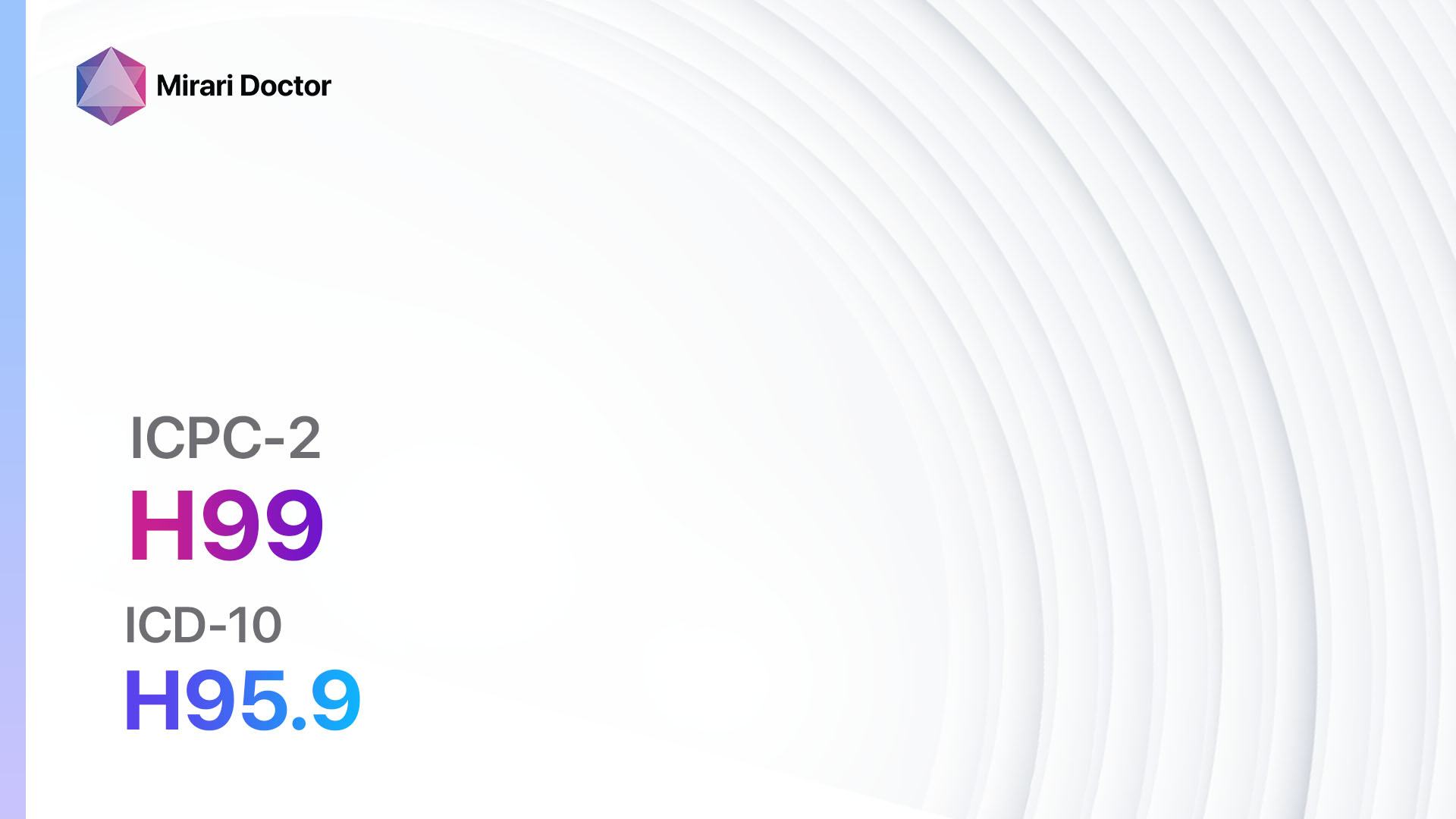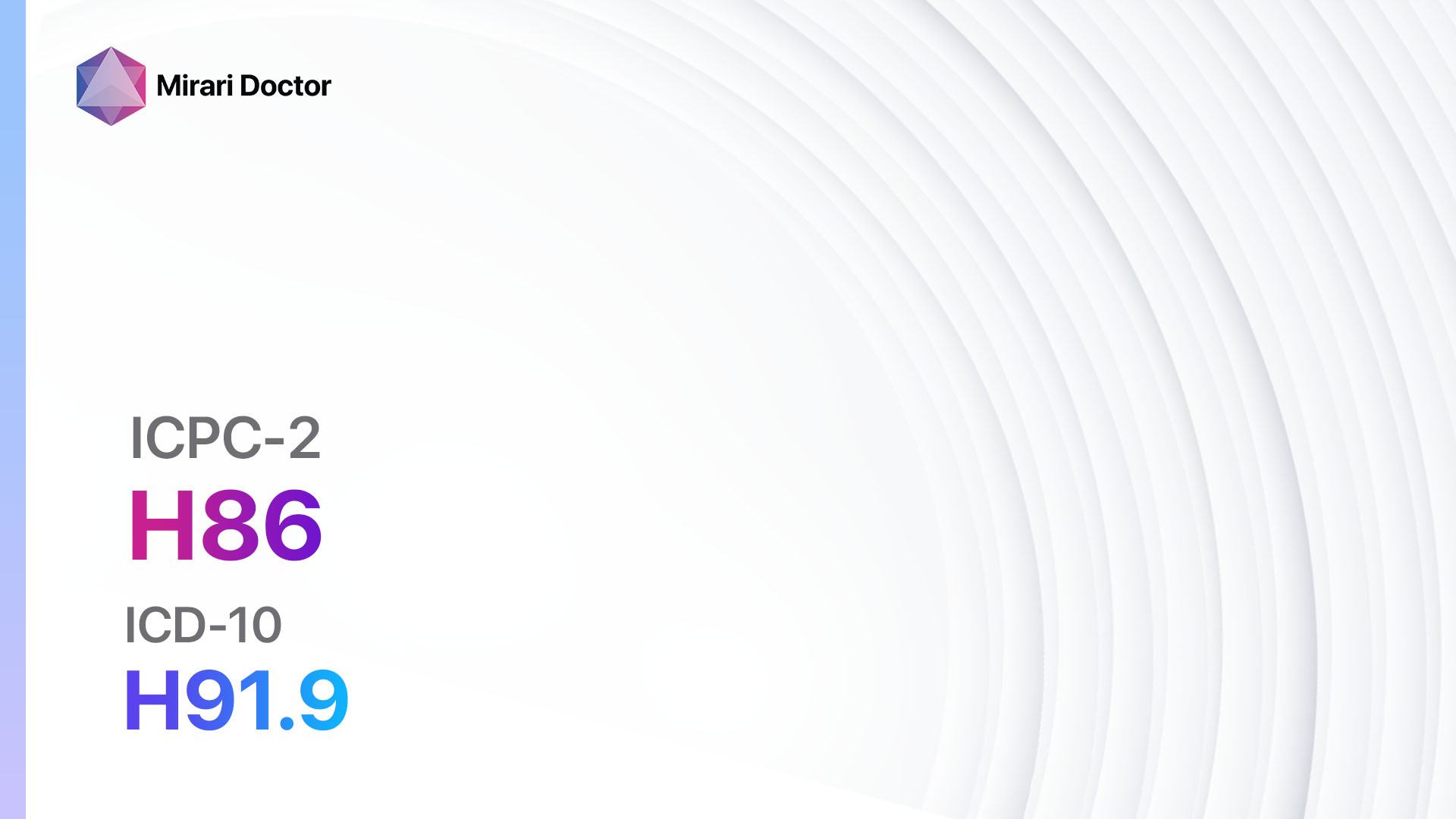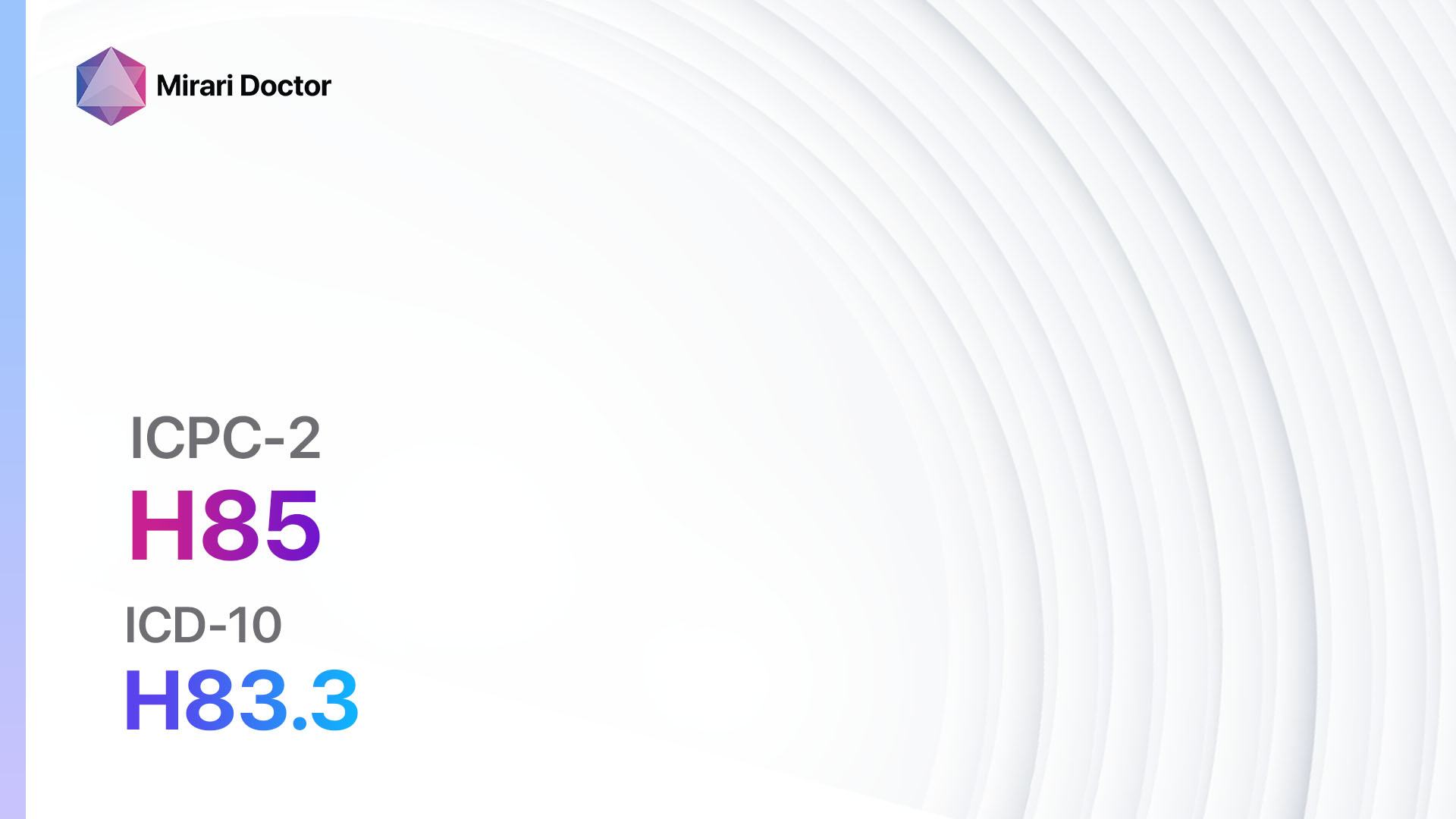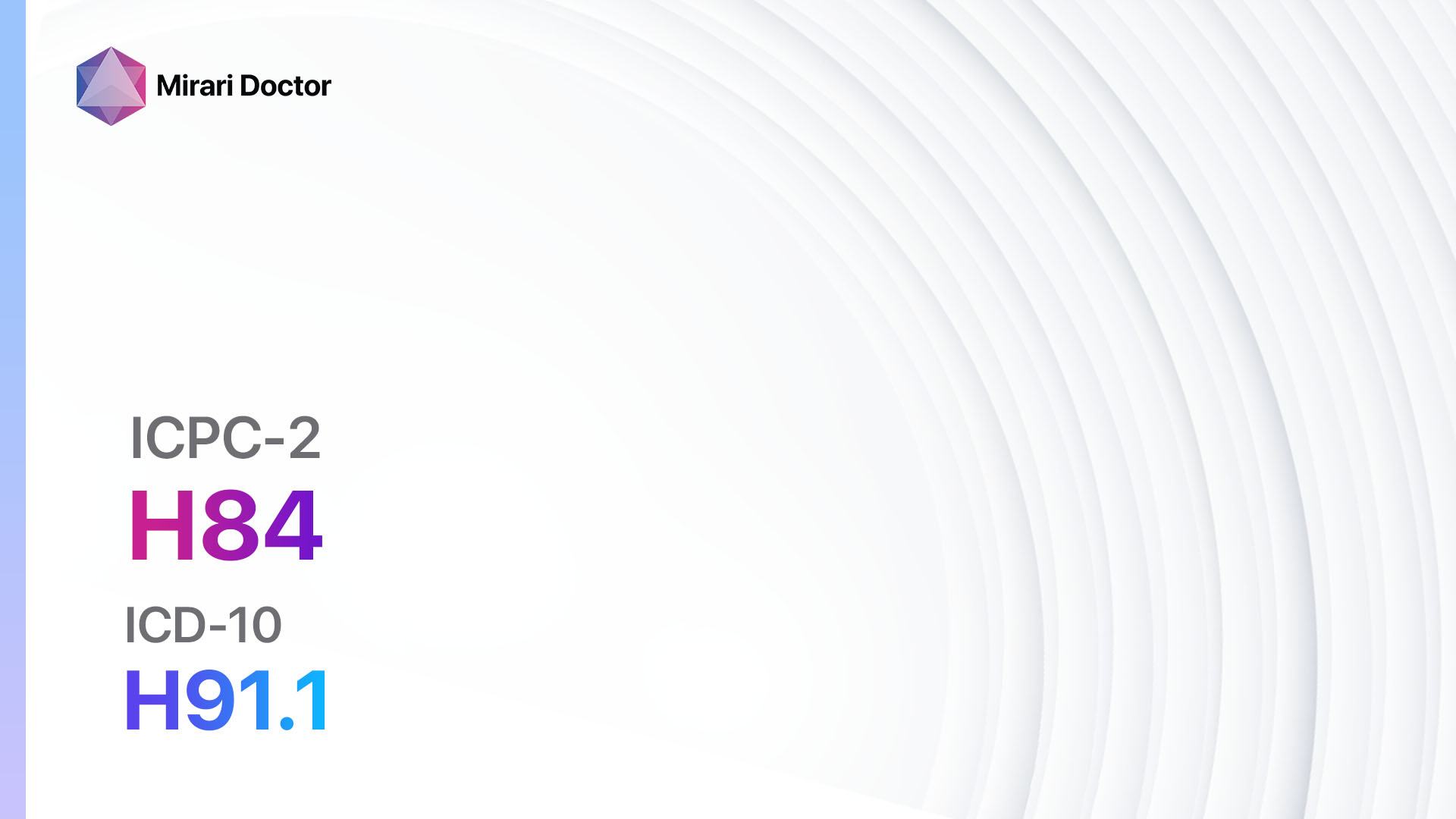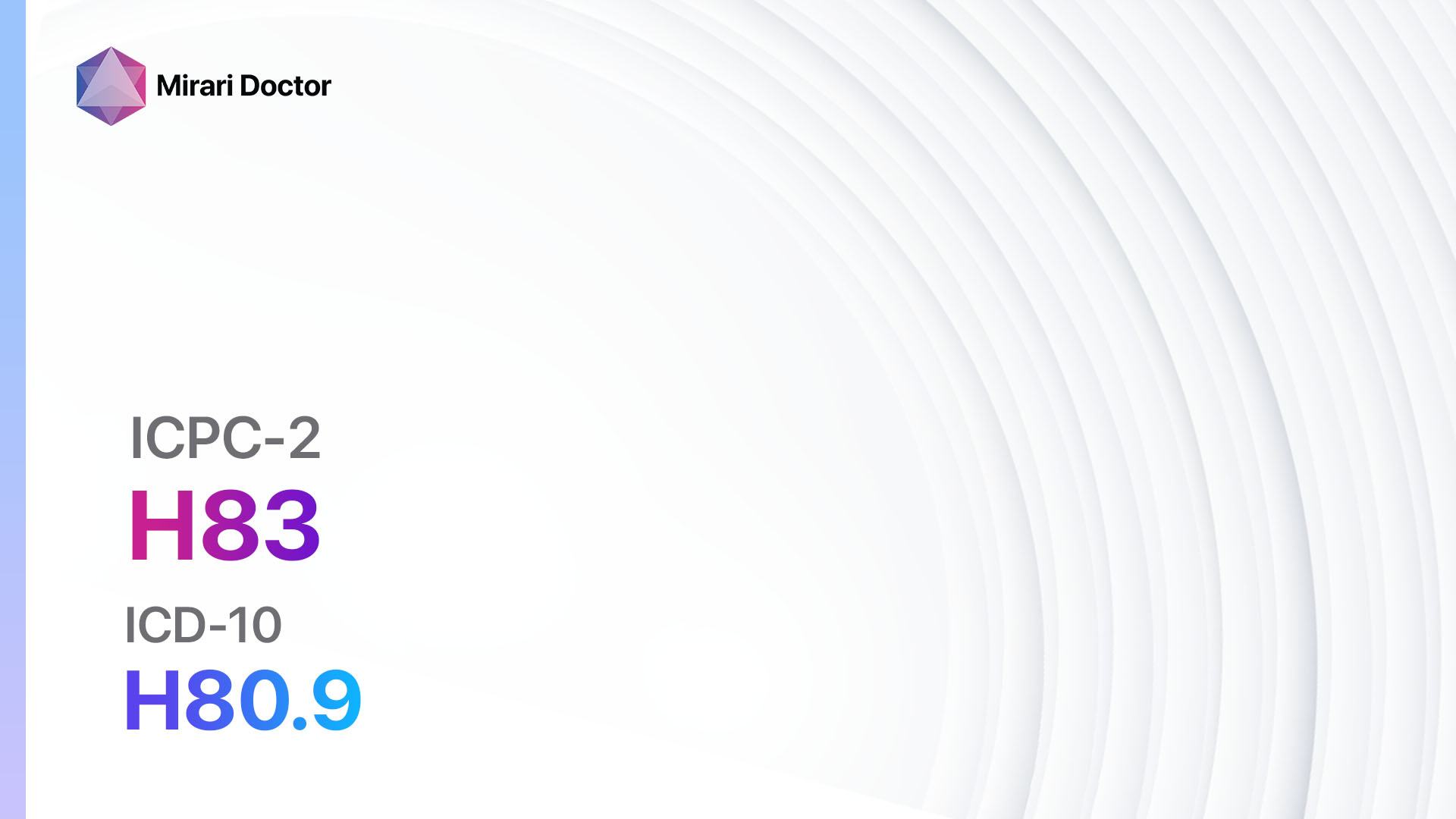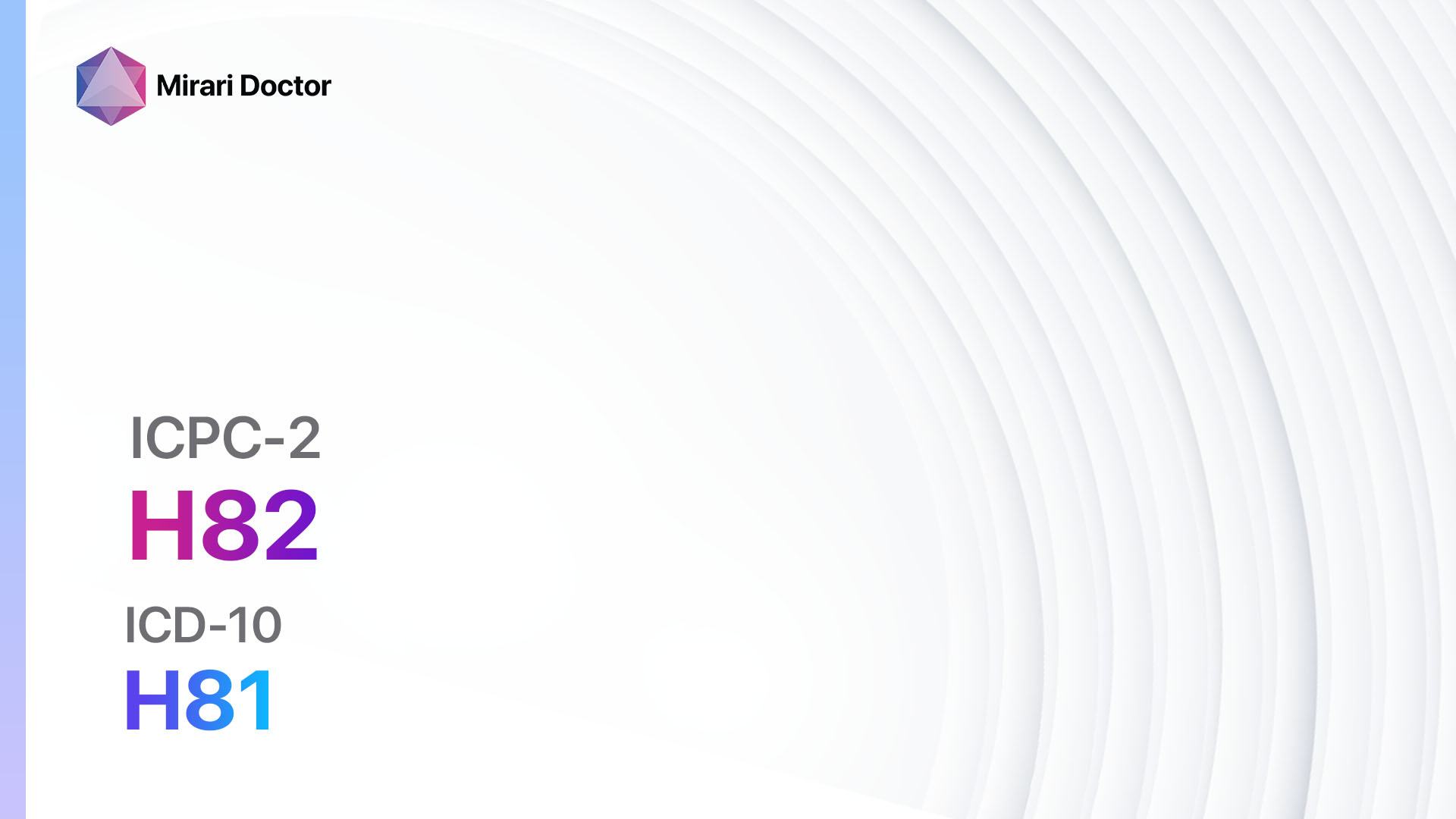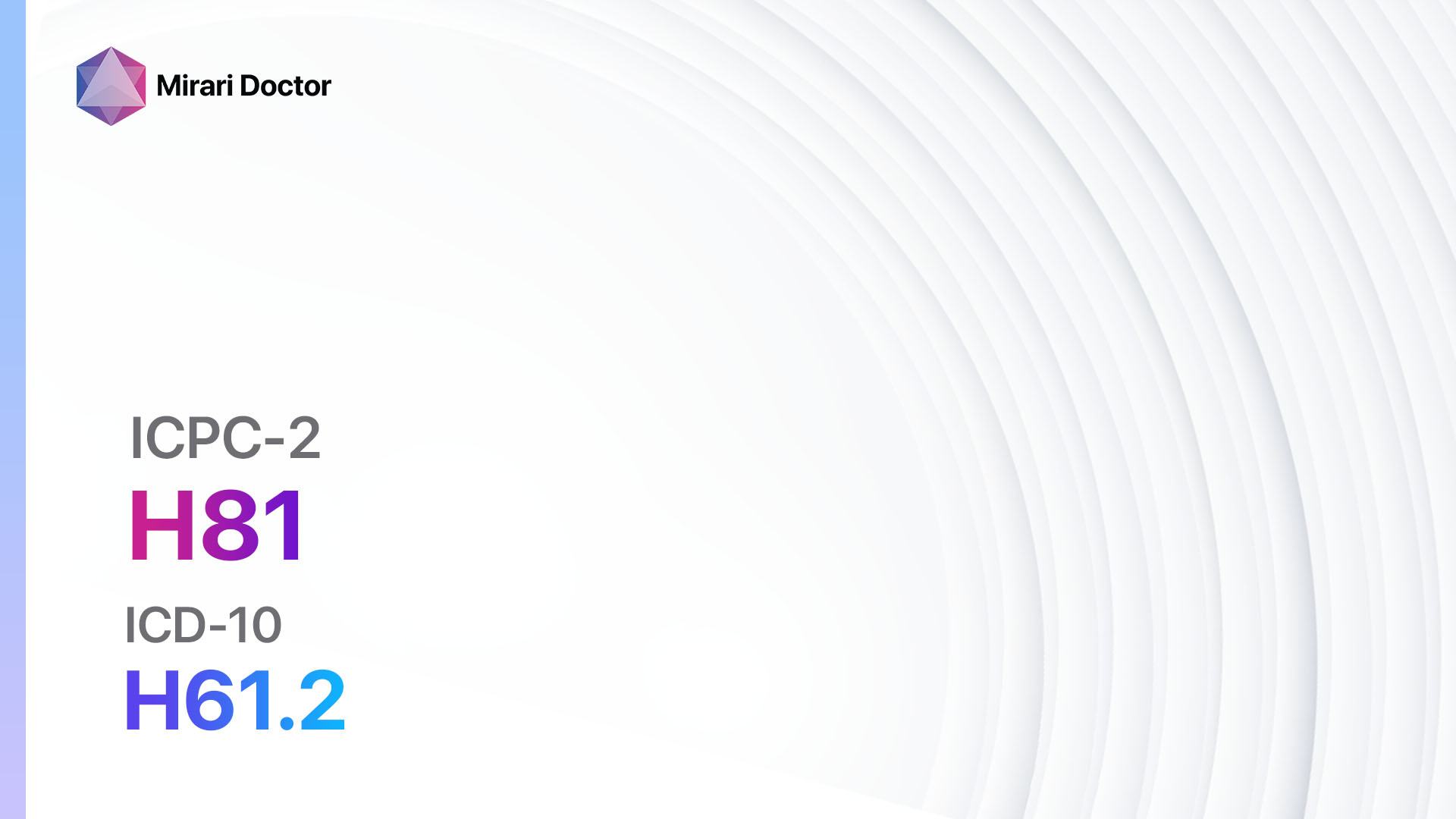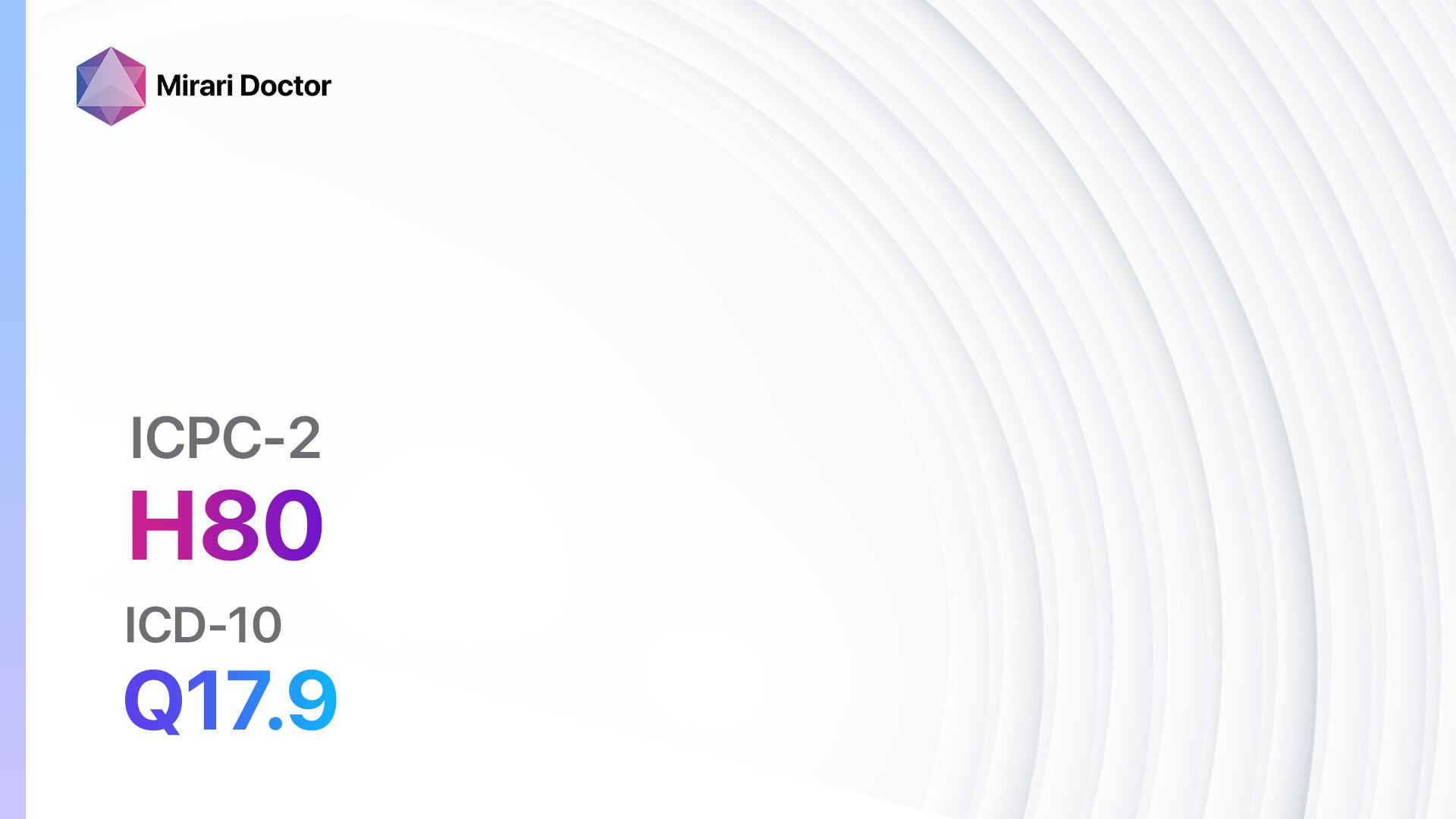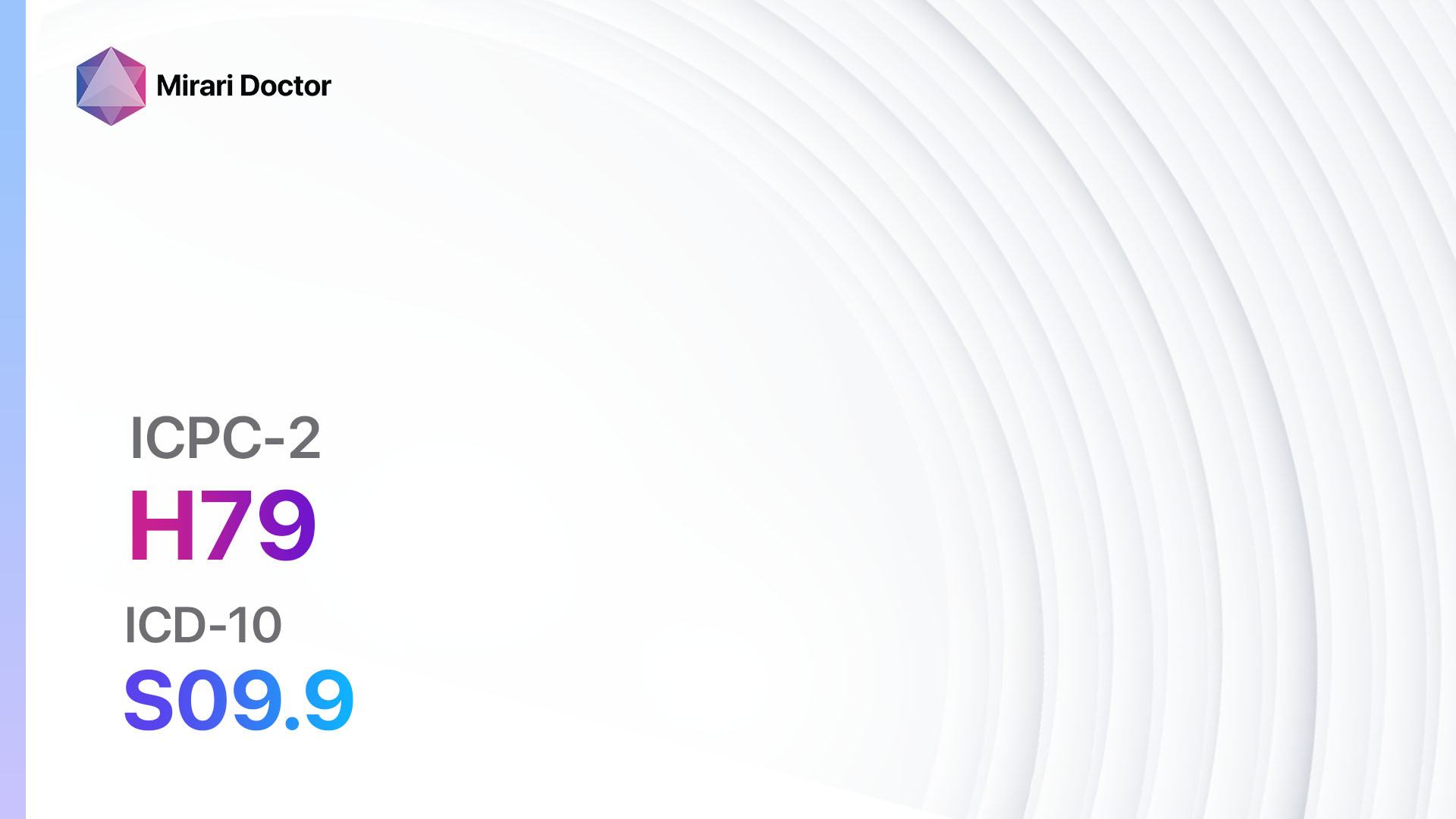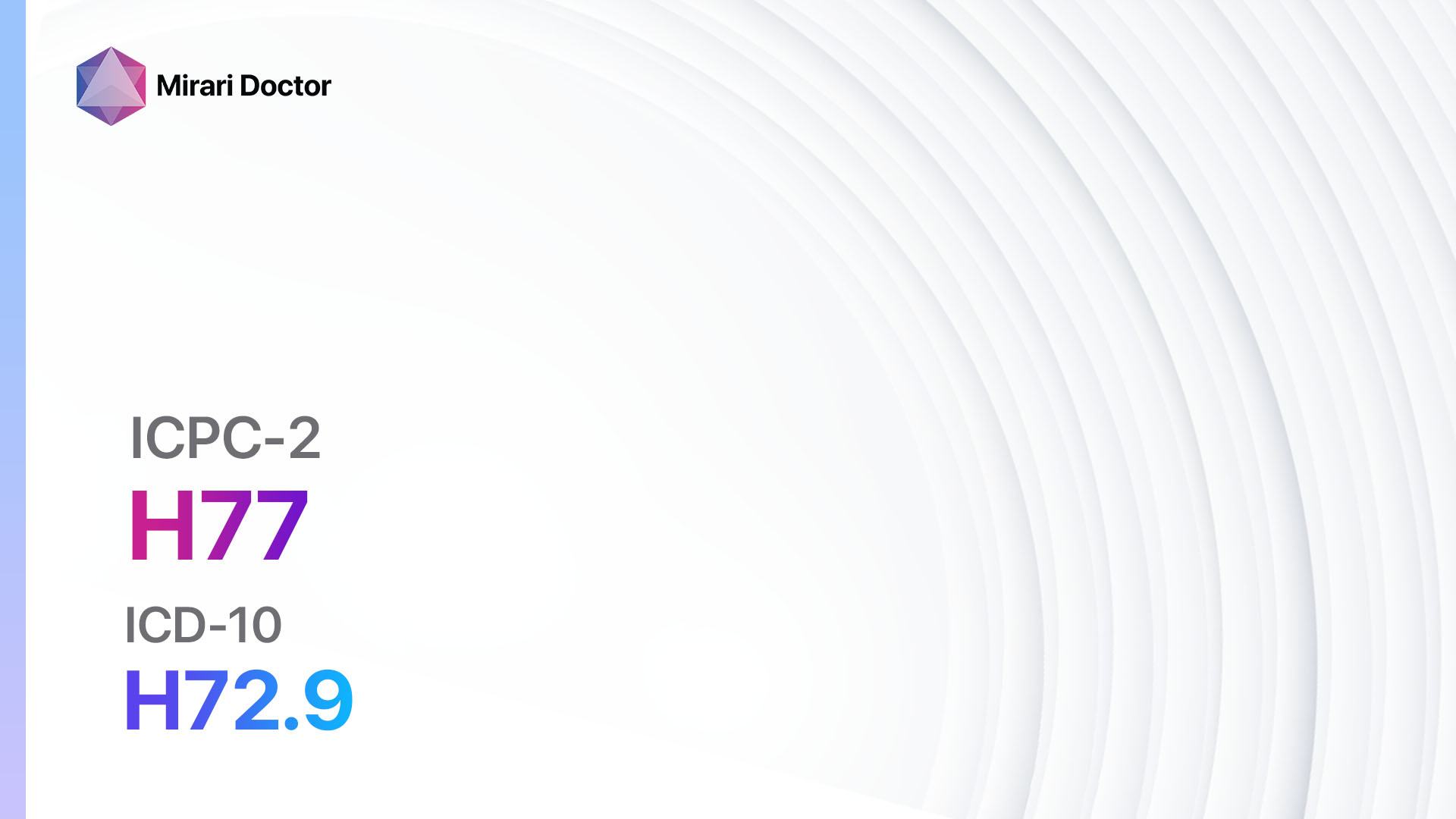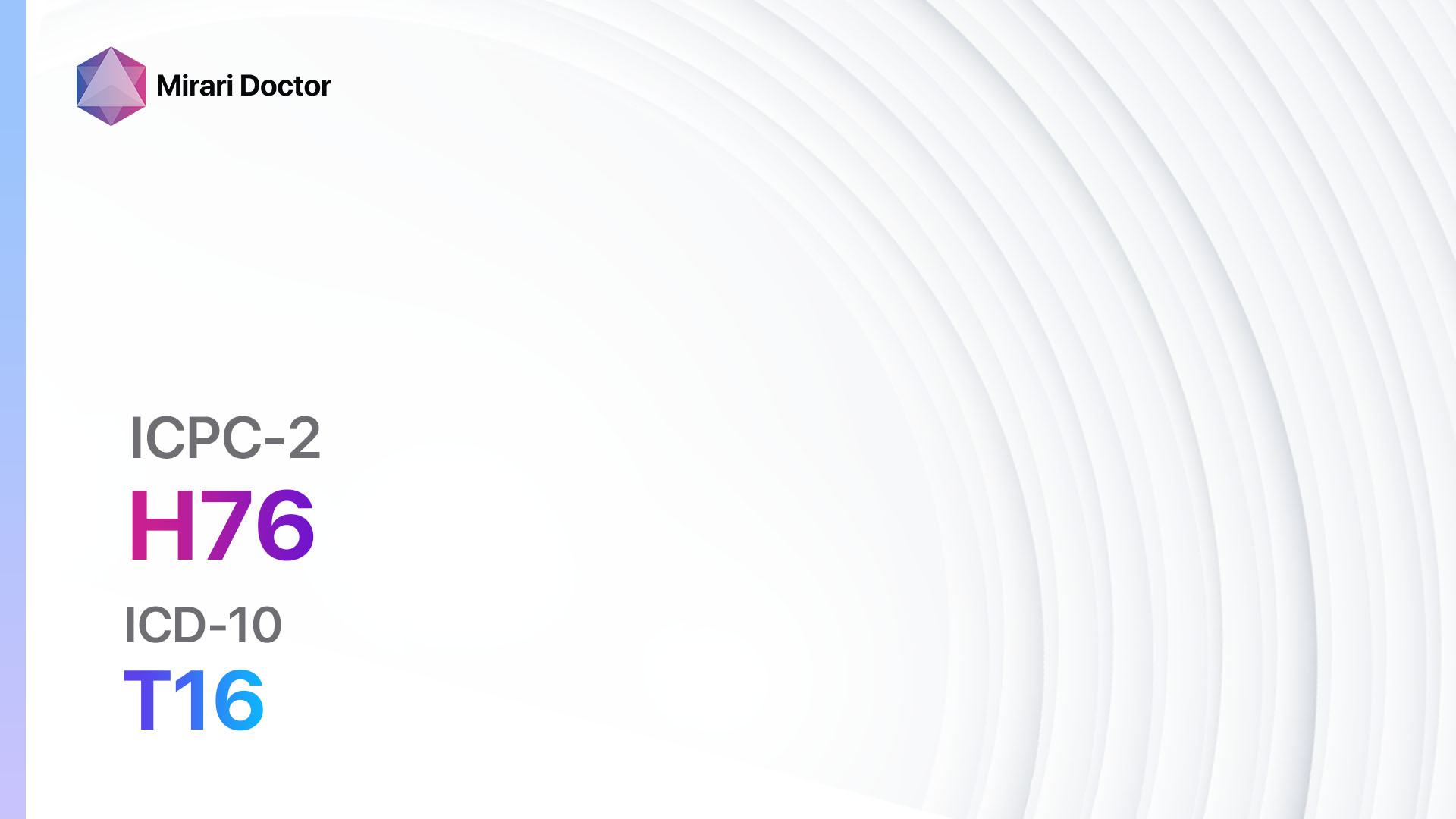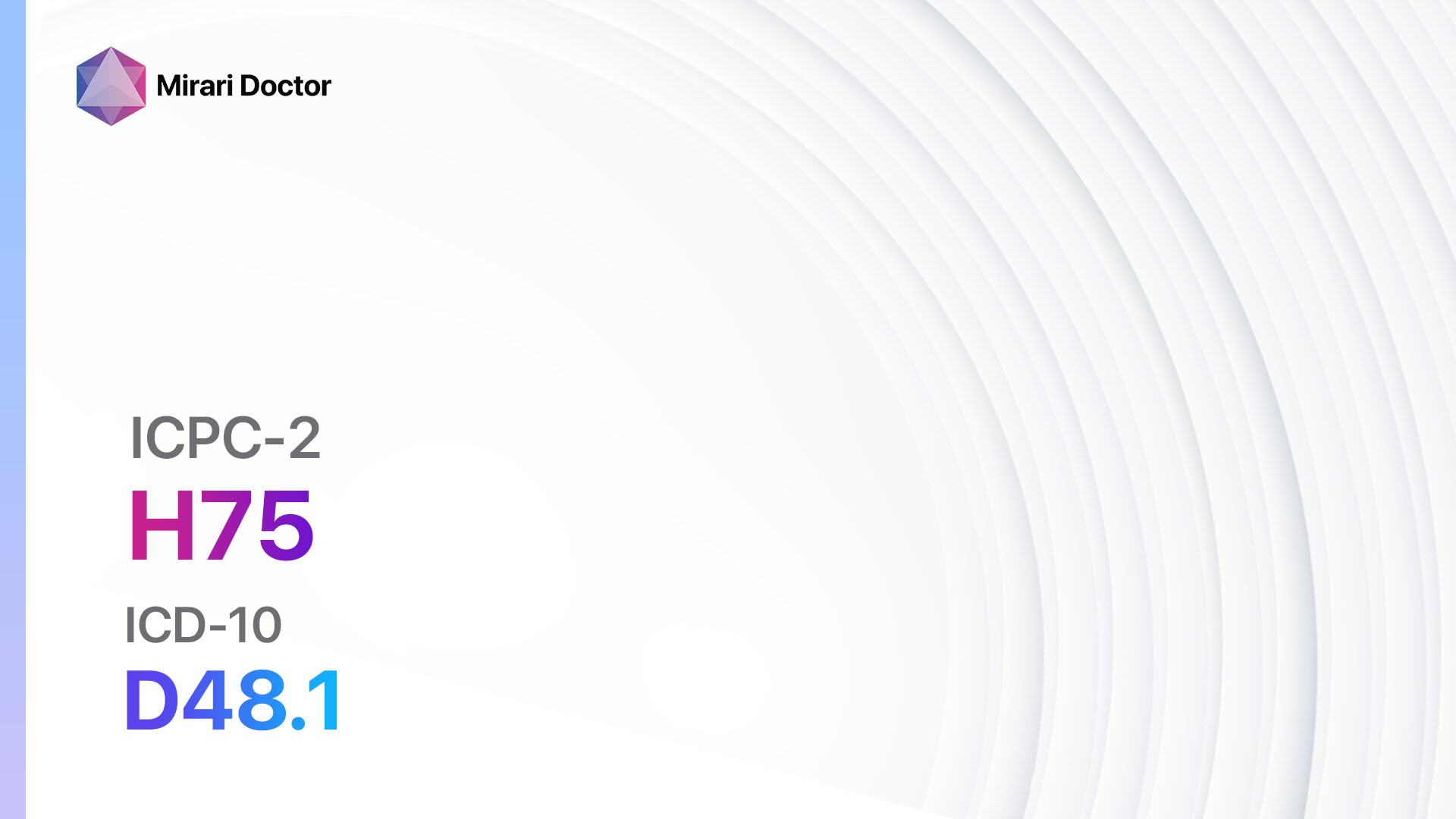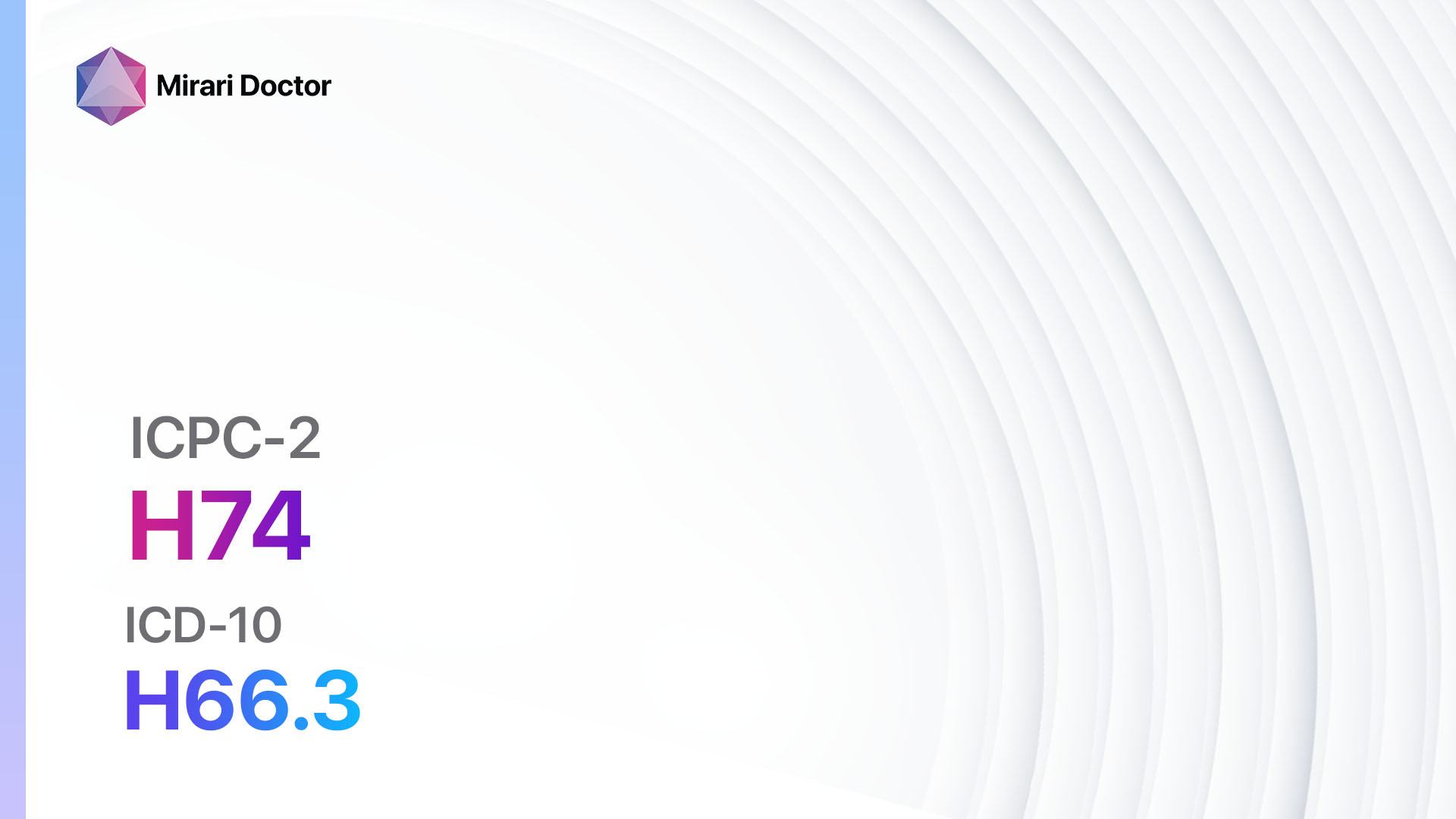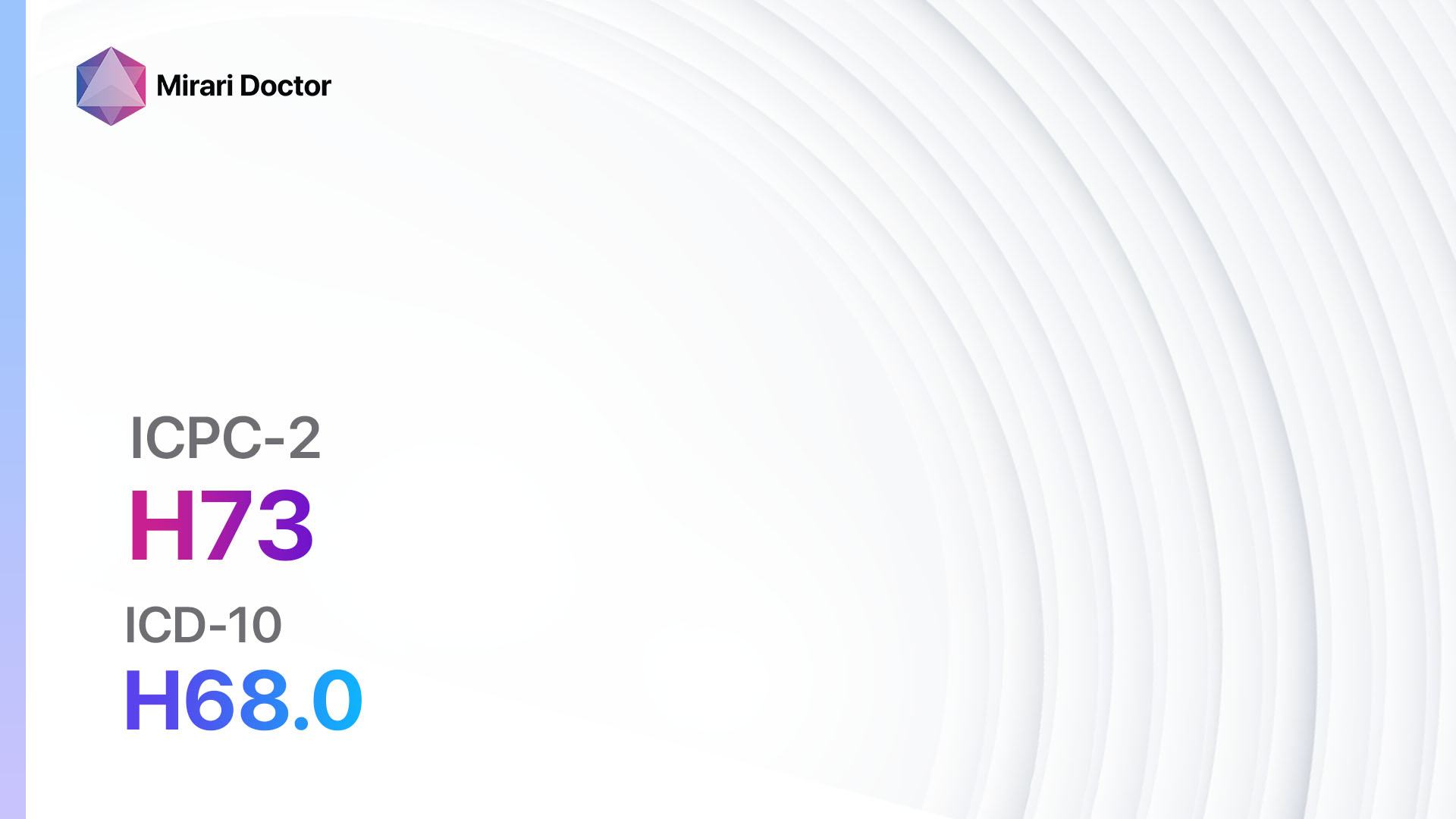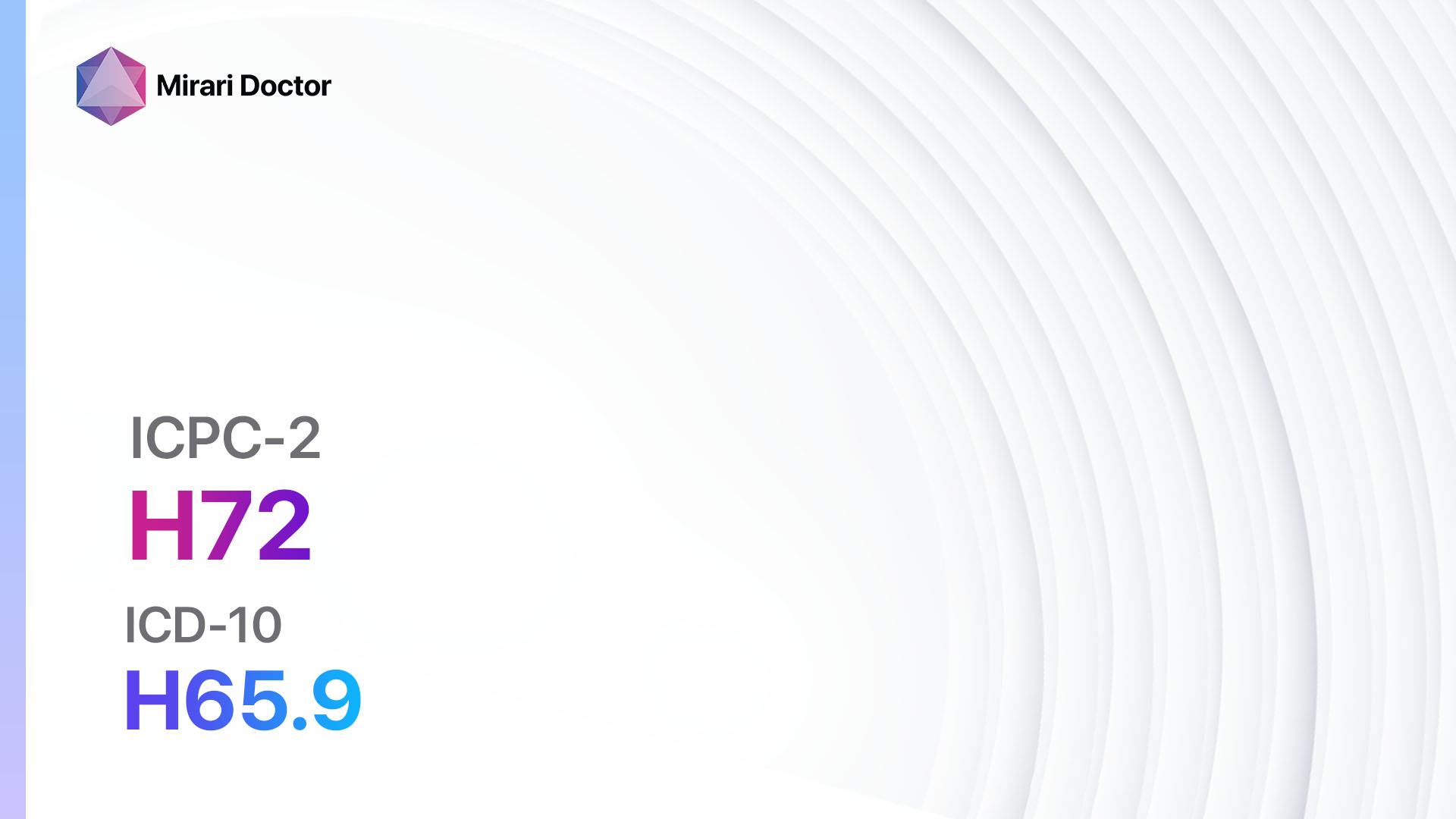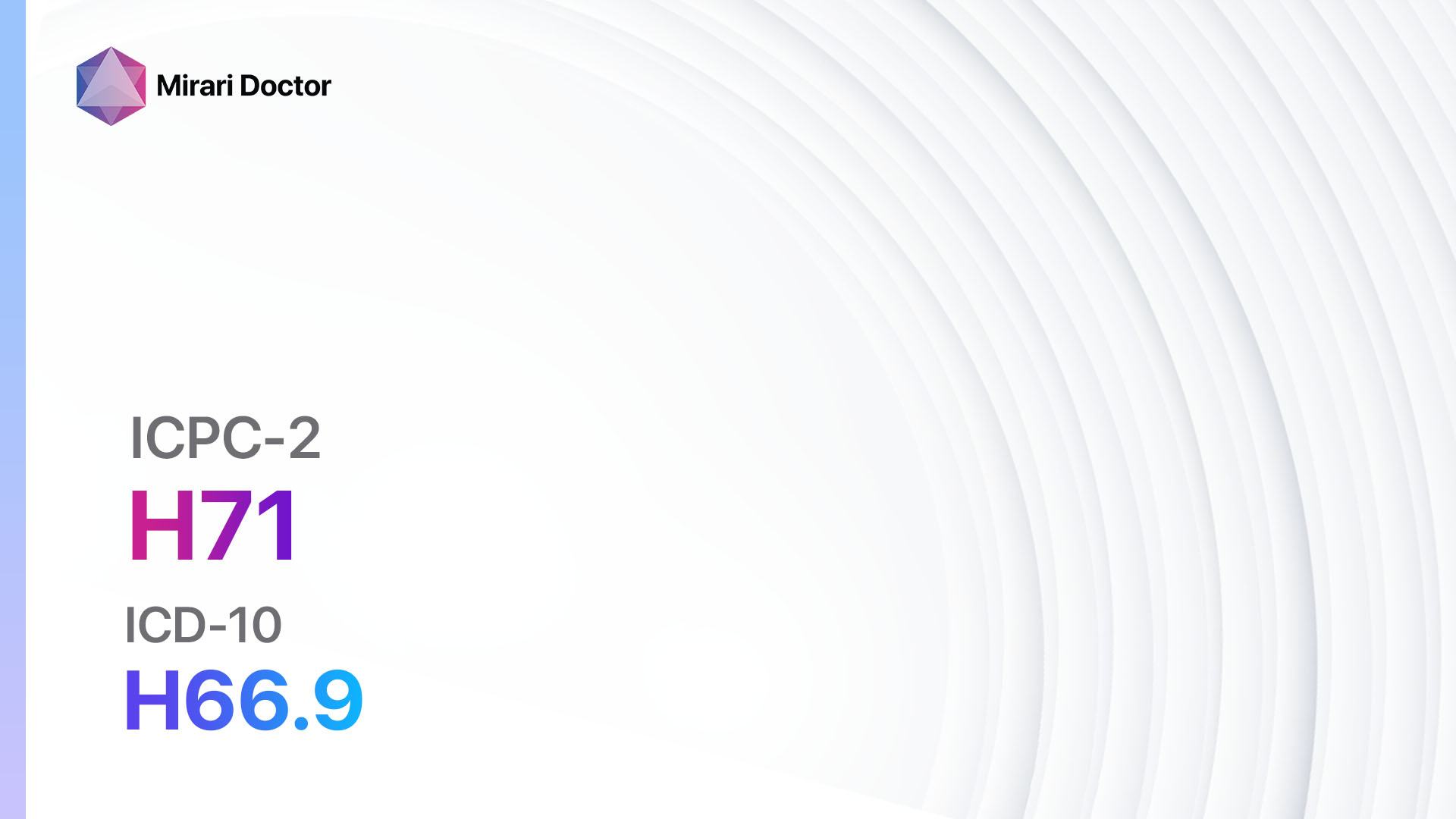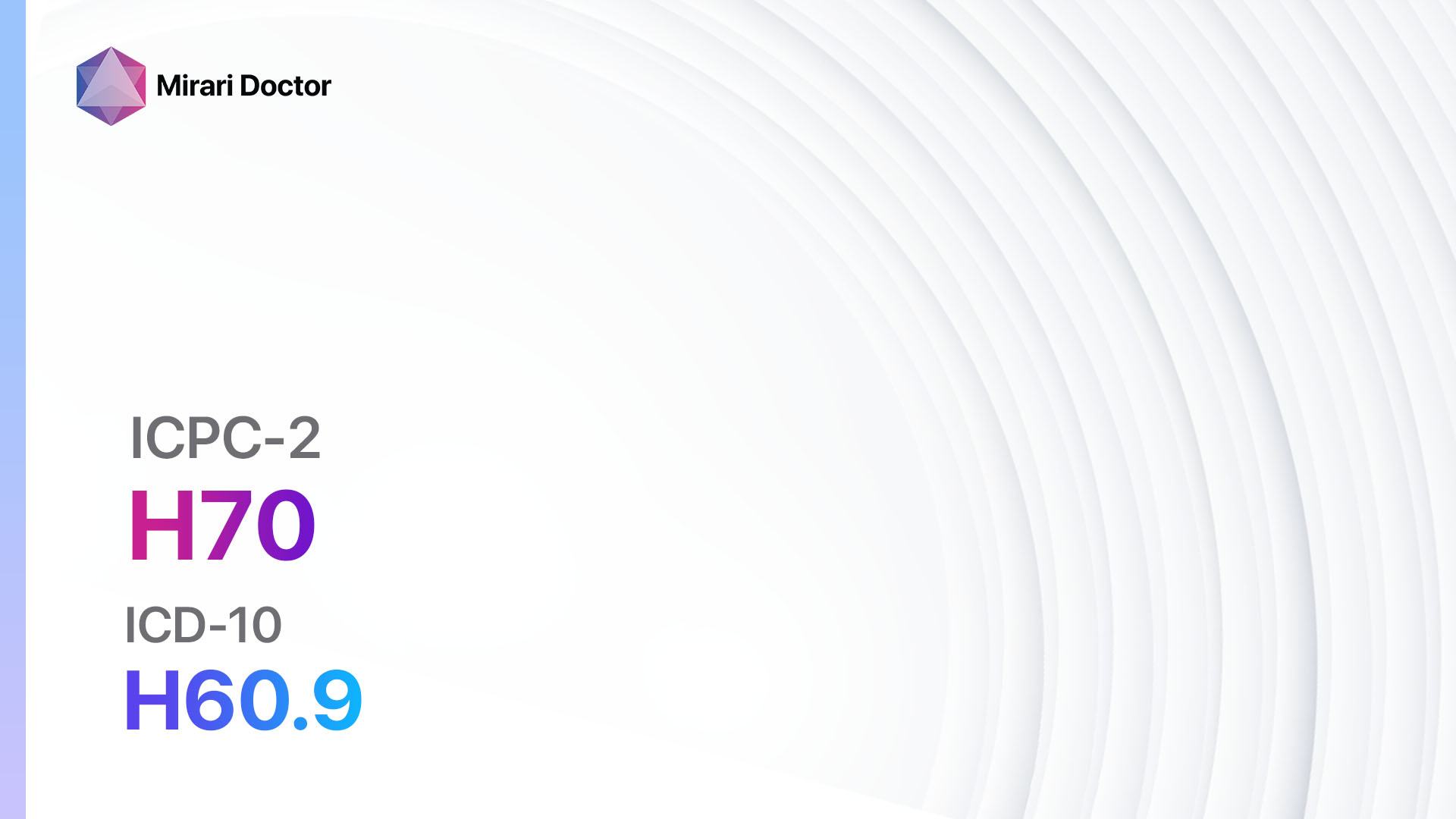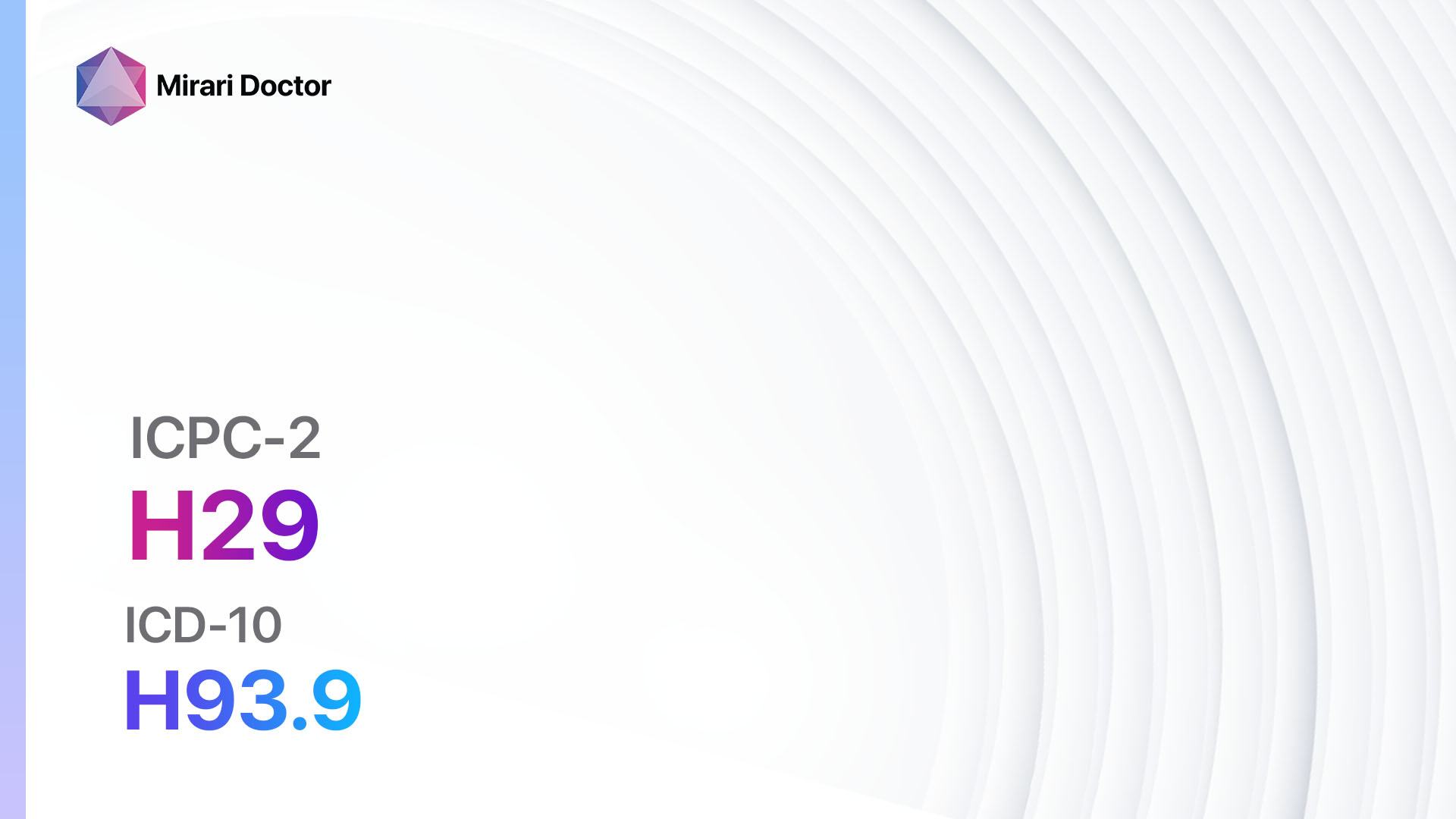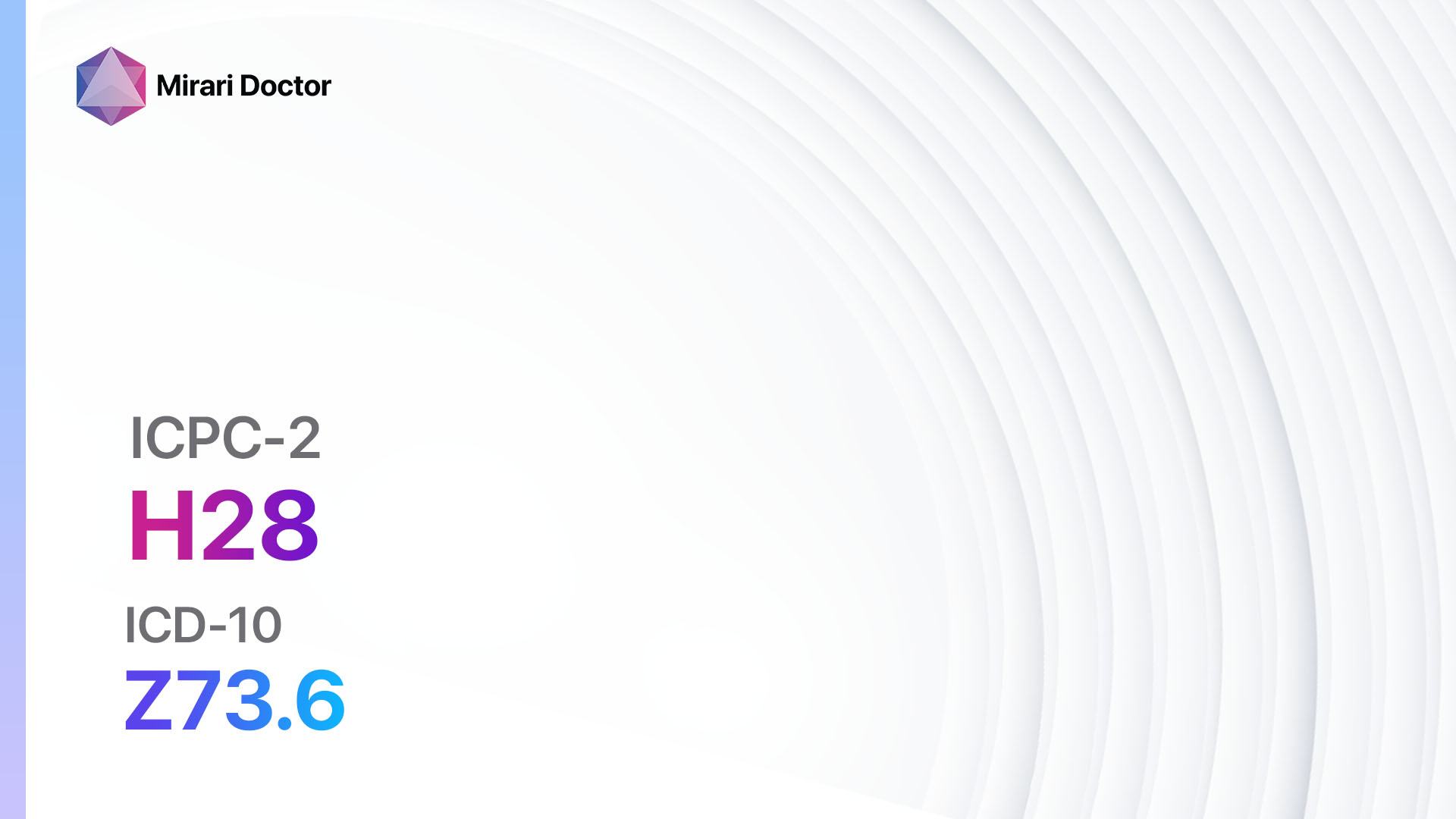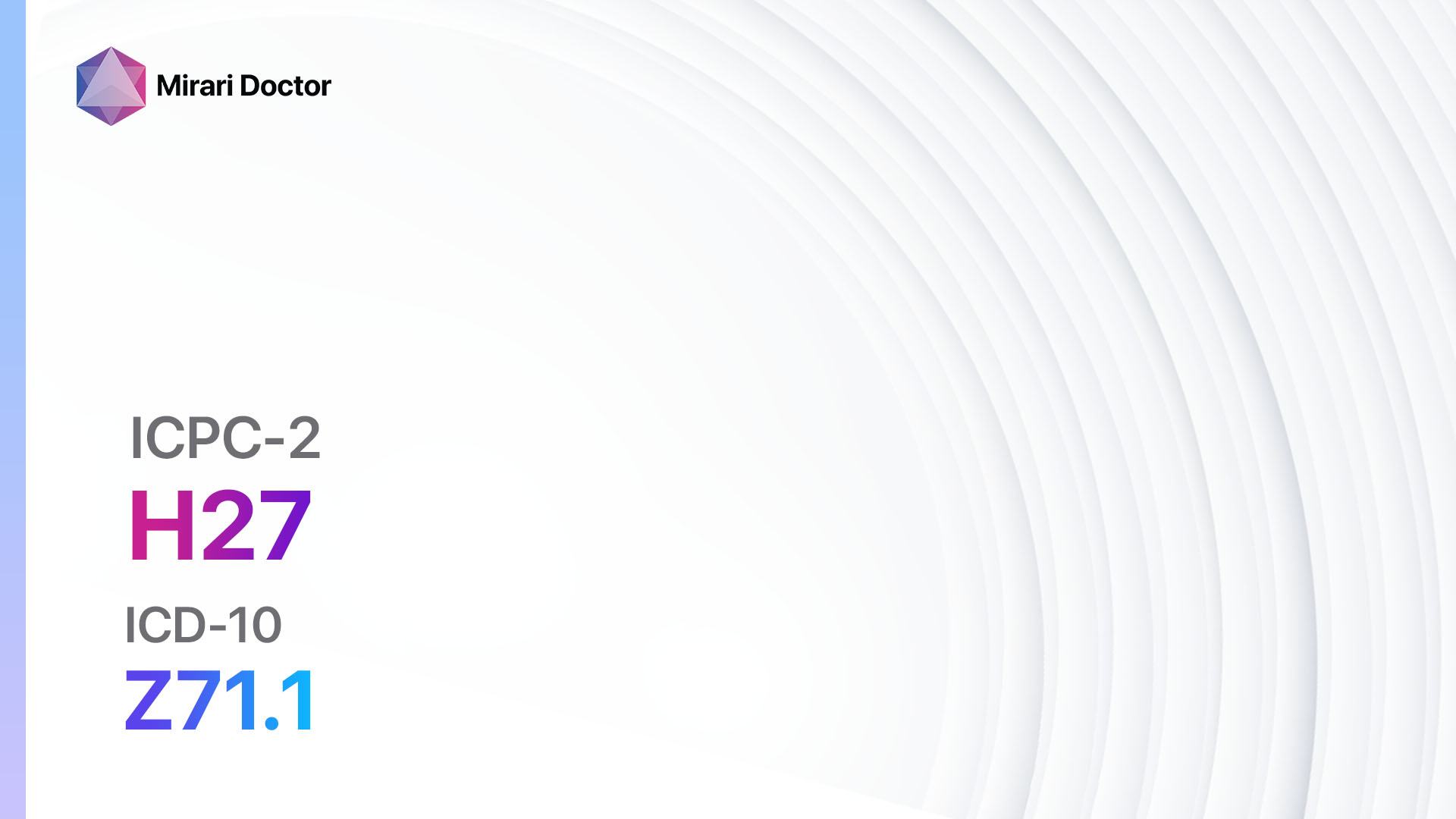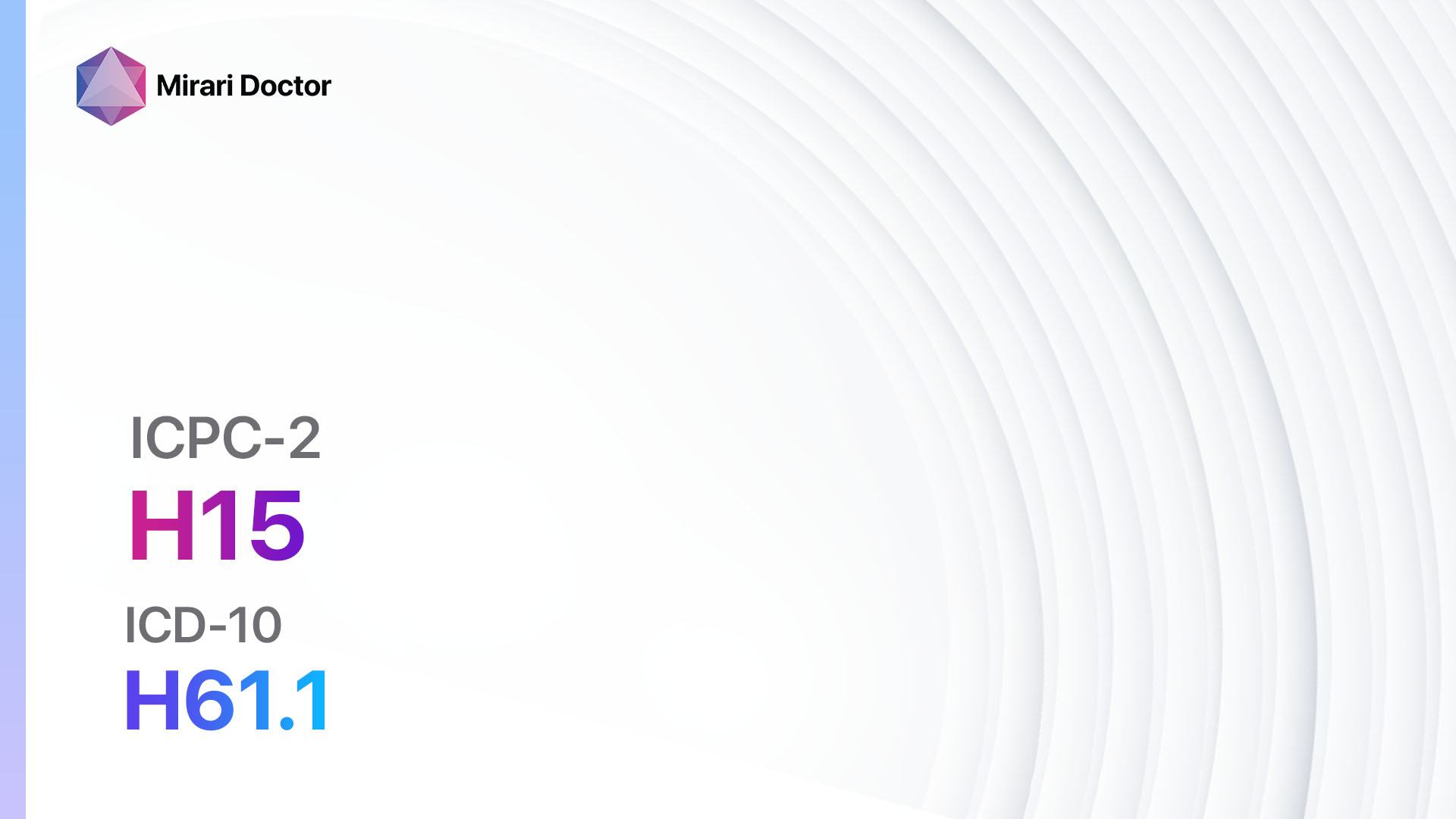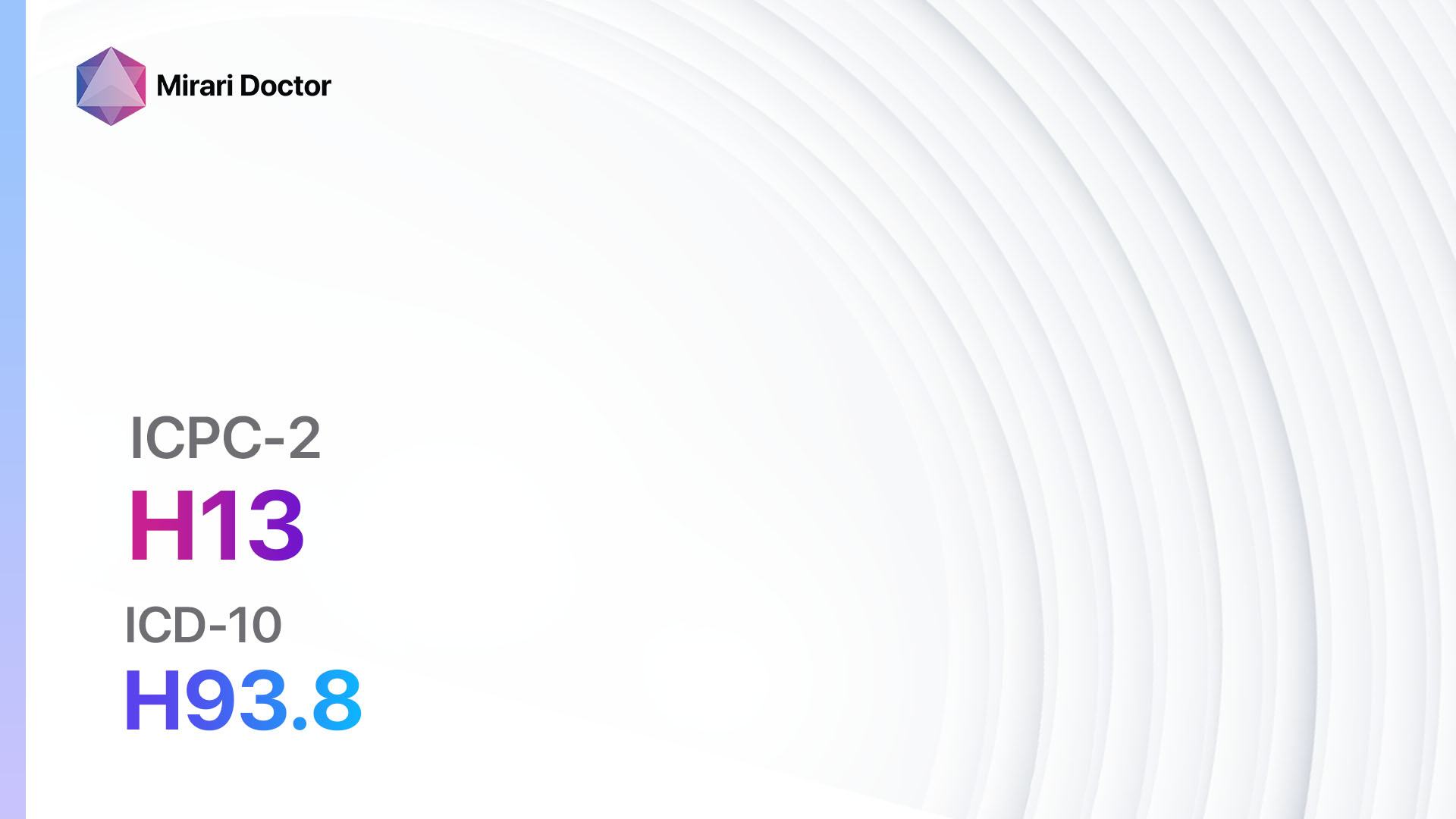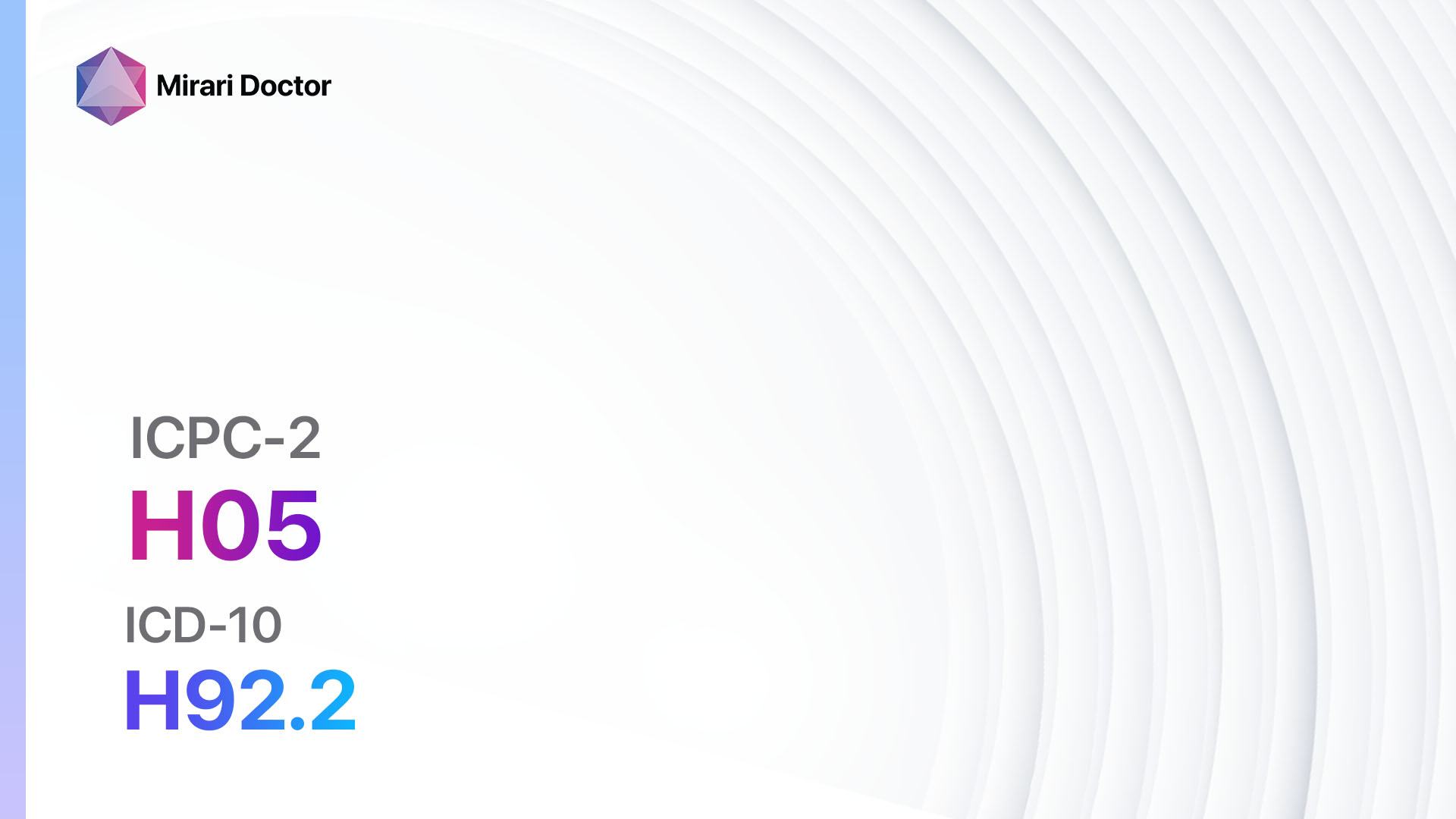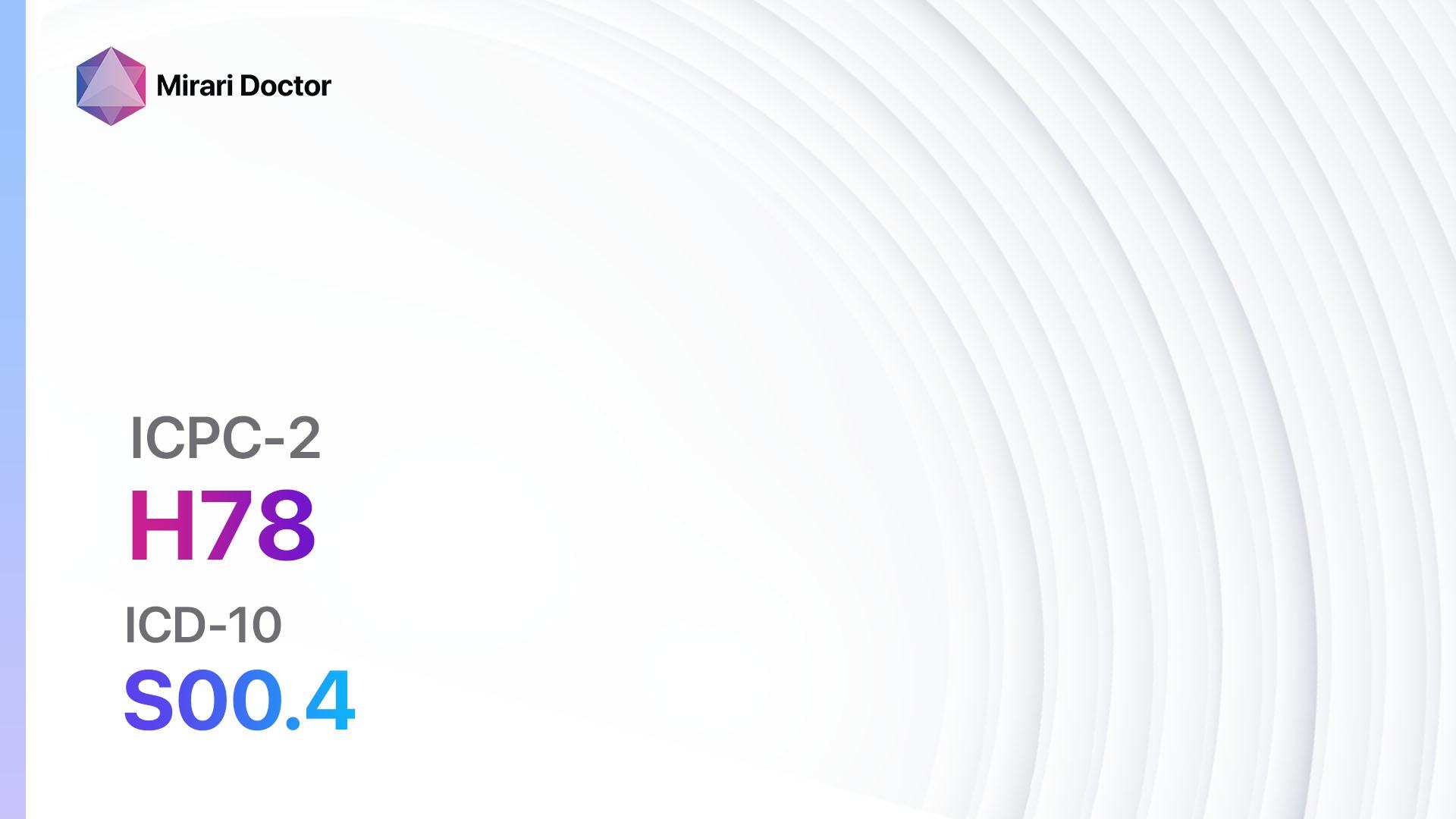
Introduction
Superficial injury of the ear refers to any damage or trauma to the outer part of the ear, including the earlobe, helix, or antihelix. This type of injury can occur due to various causes, such as accidents, sports injuries, or physical altercations[1]. The aim of this guide is to provide healthcare professionals with a comprehensive overview of the symptoms, causes, diagnostic steps, possible interventions, and patient education related to superficial injury of the ear.
Codes
Symptoms
- Pain: Patients may experience pain in the affected area of the ear[4].
- Swelling: Swelling may be present in the injured area[5].
- Bruising: The injured area may develop bruising[6].
- Bleeding: Superficial injuries of the ear may cause bleeding[7].
- Redness: The injured area may appear red or inflamed[8].
Causes
- Trauma: Superficial injuries of the ear can occur due to trauma, such as a direct blow or impact to the ear[9].
- Accidents: Accidental injuries, such as falls or car accidents, can also result in superficial ear injuries[10].
Diagnostic Steps
Medical History
- Obtain a detailed medical history from the patient, including information about the cause of the injury, any previous ear injuries, and any underlying medical conditions that may affect healing or treatment options.
Physical Examination
- Perform a thorough physical examination of the injured ear, assessing for signs of swelling, bruising, bleeding, and redness.
- Inspect the ear for any lacerations or abrasions.
- Palpate the area to assess for tenderness or deformities.
Laboratory Tests
- No specific laboratory tests are typically required for the diagnosis of superficial ear injuries.
Diagnostic Imaging
- Diagnostic imaging is generally not necessary for the diagnosis of superficial ear injuries.
Other Tests
- In some cases, a tetanus shot may be recommended if the injury is deep or contaminated.
Follow-up and Patient Education
- Advise the patient on proper wound care, including cleaning the area with mild soap and water, and applying an antibiotic ointment.
- Instruct the patient to keep the injured ear clean and dry.
- Educate the patient on signs of infection, such as increased pain, redness, swelling, or discharge, and advise them to seek medical attention if these symptoms occur.
- Schedule a follow-up appointment to monitor the healing progress and ensure there are no complications.
Possible Interventions
Traditional Interventions
Medications:
Top 5 drugs for Superficial injury of ear:
- Acetaminophen (e.g., Tylenol):
- Cost: $5-$15 for a bottle of 100 tablets.
- Contraindications: Allergy to acetaminophen.
- Side effects: Rare, but may include rash or allergic reaction.
- Severe side effects: Rare, but may include liver damage.
- Drug interactions: None significant.
- Warning: Do not exceed the recommended dosage.
- Ibuprofen (e.g., Advil, Motrin):
- Cost: $5-$15 for a bottle of 100 tablets.
- Contraindications: Allergy to ibuprofen, history of stomach ulcers or bleeding disorders.
- Side effects: Upset stomach, heartburn.
- Severe side effects: Rare, but may include stomach bleeding or kidney problems.
- Drug interactions: Blood thinners, other NSAIDs.
- Warning: Do not exceed the recommended dosage.
- Antibiotic ointment (e.g., Neosporin):
- Cost: $5-$10 for a tube.
- Contraindications: Allergy to neomycin, polymyxin B, or bacitracin.
- Side effects: Rare, but may include rash or allergic reaction.
- Severe side effects: Rare, but may include severe allergic reaction.
- Drug interactions: None significant.
- Warning: For external use only.
- Topical corticosteroids (e.g., hydrocortisone cream):
- Cost: $5-$15 for a tube.
- Contraindications: Allergy to corticosteroids.
- Side effects: Rare, but may include skin thinning or discoloration.
- Severe side effects: Rare, but may include severe allergic reaction.
- Drug interactions: None significant.
- Warning: For external use only. Do not use on open wounds.
- Oral antibiotics (e.g., amoxicillin, cephalexin):
- Cost: $10-$50 for a course of treatment.
- Contraindications: Allergy to antibiotics.
- Side effects: Upset stomach, diarrhea.
- Severe side effects: Rare, but may include severe allergic reaction or antibiotic-associated colitis.
- Drug interactions: None significant.
- Warning: Take as directed and complete the full course of treatment.
Alternative Drugs:
- Silver sulfadiazine cream: Used for infected wounds. Cost: $10-$20 for a tube.
- Bacitracin ointment: An alternative to antibiotic ointment. Cost: $5-$10 for a tube.
- Dermabond: A tissue adhesive used to close small wounds. Cost: $20-$50 per application.
- Lidocaine gel: Topical anesthetic for pain relief. Cost: $10-$20 for a tube.
- Hydrogen peroxide: Used for wound cleaning. Cost: $2-$5 for a bottle.
Surgical Procedures:
- Surgical intervention is generally not required for superficial injuries of the ear. However, in cases of severe lacerations or avulsion injuries, surgical repair may be necessary.
Alternative Interventions
- Cold compress: Applying a cold compress to the injured ear can help reduce swelling and pain. Cost: $5-$10 for a reusable cold pack.
- Aloe vera gel: Applying aloe vera gel to the injured area can promote healing and reduce inflammation. Cost: $5-$10 for a tube of aloe vera gel.
- Tea tree oil: Diluted tea tree oil can be applied topically to prevent infection and promote healing. Cost: $5-$10 for a bottle of tea tree oil.
- Arnica gel: Arnica gel can be applied topically to reduce bruising and swelling. Cost: $10-$20 for a tube of arnica gel.
- Honey dressing: Applying honey to the wound and covering it with a sterile dressing can promote healing and prevent infection. Cost: $10-$20 for a jar of honey.
Lifestyle Interventions
- Rest and elevation: Resting and elevating the injured ear can help reduce swelling and promote healing. Cost: Free.
- Avoiding pressure: Avoiding pressure on the injured ear can prevent further damage and promote healing. Cost: Free.
- Good nutrition: Consuming a balanced diet rich in vitamins and minerals can support the healing process. Cost: Varies depending on food choices.
- Stress reduction: Managing stress levels can promote overall healing and well-being. Cost: Varies depending on chosen stress reduction techniques.
- Smoking cessation: Quitting smoking can improve wound healing and overall health. Cost: Varies depending on chosen smoking cessation method.
It is important to note that the cost ranges provided are approximate and may vary depending on the location and availability of the interventions.
Mirari Cold Plasma Alternative Intervention
Understanding Mirari Cold Plasma
- Safe and Non-Invasive Treatment: Mirari Cold Plasma is a safe and non-invasive treatment option for various skin conditions. It does not require incisions, minimizing the risk of scarring, bleeding, or tissue damage.
- Efficient Extraction of Foreign Bodies: Mirari Cold Plasma facilitates the removal of foreign bodies from the skin by degrading and dissociating organic matter, allowing easier access and extraction.
- Pain Reduction and Comfort: Mirari Cold Plasma has a local analgesic effect, providing pain relief during the treatment, making it more comfortable for the patient.
- Reduced Risk of Infection: Mirari Cold Plasma has antimicrobial properties, effectively killing bacteria and reducing the risk of infection.
- Accelerated Healing and Minimal Scarring: Mirari Cold Plasma stimulates wound healing and tissue regeneration, reducing healing time and minimizing the formation of scars.
Mirari Cold Plasma Prescription
Video instructions for using Mirari Cold Plasma Device – H78 Superficial injury of ear (ICD-10:S00.4)
| Mild | Moderate | Severe |
| Mode setting: 1 (Infection) Location: 0 (Localized) Morning: 15 minutes, Evening: 15 minutes |
Mode setting: 1 (Infection) Location: 0 (Localized) Morning: 30 minutes, Lunch: 30 minutes, Evening: 30 minutes |
Mode setting: 1 (Infection) Location: 0 (Localized) Morning: 30 minutes, Lunch: 30 minutes, Evening: 30 minutes |
| Mode setting: 2 (Wound Healing) Location: 0 (Localized) Morning: 15 minutes, Evening: 15 minutes |
Mode setting: 2 (Wound Healing) Location: 0 (Localized) Morning: 30 minutes, Lunch: 30 minutes, Evening: 30 minutes |
Mode setting: 2 (Wound Healing) Location: 0 (Localized) Morning: 30 minutes, Lunch: 30 minutes, Evening: 30 minutes |
| Mode setting: 3 (Antiviral Therapy) Location: 0 (Localized) Morning: 15 minutes, Evening: 15 minutes |
Mode setting: 3 (Antiviral Therapy) Location: 0 (Localized) Morning: 30 minutes, Lunch: 30 minutes, Evening: 30 minutes |
Mode setting: 3 (Antiviral Therapy) Location: 0 (Localized) Morning: 30 minutes, Lunch: 30 minutes, Evening: 30 minutes |
| Total Morning: 45 minutes approx. $7.50 USD, Evening: 45 minutes approx. $7.50 USD |
Total Morning: 90 minutes approx. $15 USD, Lunch: 90 minutes approx. $15 USD, Evening: 90 minutes approx. $15 USD, |
Total Morning: 90 minutes approx. $15 USD, Lunch: 90 minutes approx. $15 USD, Evening: 90 minutes approx. $15 USD, |
| Usual treatment for 7-60 days approx. $105 USD – $900 USD | Usual treatment for 6-8 weeks approx. $1,890 USD – $2,520 USD |
Usual treatment for 3-6 months approx. $4,050 USD – $8,100 USD
|
 |
|
Use the Mirari Cold Plasma device to treat Superficial injury of ear effectively.
WARNING: MIRARI COLD PLASMA IS DESIGNED FOR THE HUMAN BODY WITHOUT ANY ARTIFICIAL OR THIRD PARTY PRODUCTS. USE OF OTHER PRODUCTS IN COMBINATION WITH MIRARI COLD PLASMA MAY CAUSE UNPREDICTABLE EFFECTS, HARM OR INJURY. PLEASE CONSULT A MEDICAL PROFESSIONAL BEFORE COMBINING ANY OTHER PRODUCTS WITH USE OF MIRARI.
Step 1: Cleanse the Skin
- Start by cleaning the affected area of the skin with a gentle cleanser or mild soap and water. Gently pat the area dry with a clean towel.
Step 2: Prepare the Mirari Cold Plasma device
- Ensure that the Mirari Cold Plasma device is fully charged or has fresh batteries as per the manufacturer’s instructions. Make sure the device is clean and in good working condition.
- Switch on the Mirari device using the power button or by following the specific instructions provided with the device.
- Some Mirari devices may have adjustable settings for intensity or treatment duration. Follow the manufacturer’s instructions to select the appropriate settings based on your needs and the recommended guidelines.
Step 3: Apply the Device
- Place the Mirari device in direct contact with the affected area of the skin. Gently glide or hold the device over the skin surface, ensuring even coverage of the area experiencing.
- Slowly move the Mirari device in a circular motion or follow a specific pattern as indicated in the user manual. This helps ensure thorough treatment coverage.
Step 4: Monitor and Assess:
- Keep track of your progress and evaluate the effectiveness of the Mirari device in managing your Superficial injury of ear. If you have any concerns or notice any adverse reactions, consult with your health care professional.
Note
This guide is for informational purposes only and should not replace the advice of a medical professional. Always consult with your healthcare provider or a qualified medical professional for personal advice, diagnosis, or treatment. Do not solely rely on the information presented here for decisions about your health. Use of this information is at your own risk. The authors of this guide, nor any associated entities or platforms, are not responsible for any potential adverse effects or outcomes based on the content.
Mirari Cold Plasma System Disclaimer
- Purpose: The Mirari Cold Plasma System is a Class 2 medical device designed for use by trained healthcare professionals. It is registered for use in Thailand and Vietnam. It is not intended for use outside of these locations.
- Informational Use: The content and information provided with the device are for educational and informational purposes only. They are not a substitute for professional medical advice or care.
- Variable Outcomes: While the device is approved for specific uses, individual outcomes can differ. We do not assert or guarantee specific medical outcomes.
- Consultation: Prior to utilizing the device or making decisions based on its content, it is essential to consult with a Certified Mirari Tele-Therapist and your medical healthcare provider regarding specific protocols.
- Liability: By using this device, users are acknowledging and accepting all potential risks. Neither the manufacturer nor the distributor will be held accountable for any adverse reactions, injuries, or damages stemming from its use.
- Geographical Availability: This device has received approval for designated purposes by the Thai and Vietnam FDA. As of now, outside of Thailand and Vietnam, the Mirari Cold Plasma System is not available for purchase or use.
References
- Binasss.sa.cr. (2021). Management of Ear Trauma. Retrieved from https://www.binasss.sa.cr/jul/52.pdf
- PH3C. (n.d.). ICPC-2 Codes. Retrieved from http://www.ph3c.org/PH3C/docs/27/000496/0000908.pdf
- AAPC. (n.d.). ICD-10-CM Code for Superficial injury of head S00. Retrieved from https://www.aapc.com/codes/icd-10-codes/S00
- Healthline. (2018). Ear Scabs: Causes, Symptoms, and More. Retrieved from https://www.healthline.com/health/scab-in-ear
- Cleveland Clinic. (2021). Ear Injuries and Trauma. Retrieved from https://my.clevelandclinic.org/health/diseases/17574-ear-injuries-and-trauma
- Stanford Health Care. (n.d.). Ear Injuries and Trauma. Retrieved from https://stanfordhealthcare.org/medical-conditions/ear-nose-and-throat/ear-injuries-trauma.html
- MedicalNewsToday. (2018). Ear bleeding: Causes and when to see a doctor. Retrieved from https://www.medicalnewstoday.com/articles/320237
- Gesund.bund.de. (n.d.). ICD-10 code: S00.41 Superficial injury of ear Abrasion. Retrieved from https://gesund.bund.de/en/icd-code-search/s00-41
- TeachMeSurgery. (n.d.). Ear Trauma. Retrieved from https://teachmesurgery.com/ent/ear/ear-trauma/
- URMC. (n.d.). Cuts and Wounds of the External Ear. Retrieved from https://www.urmc.rochester.edu/encyclopedia/content.aspx?contentid=p02808&contenttypeid=90
Related articles
Made in USA


